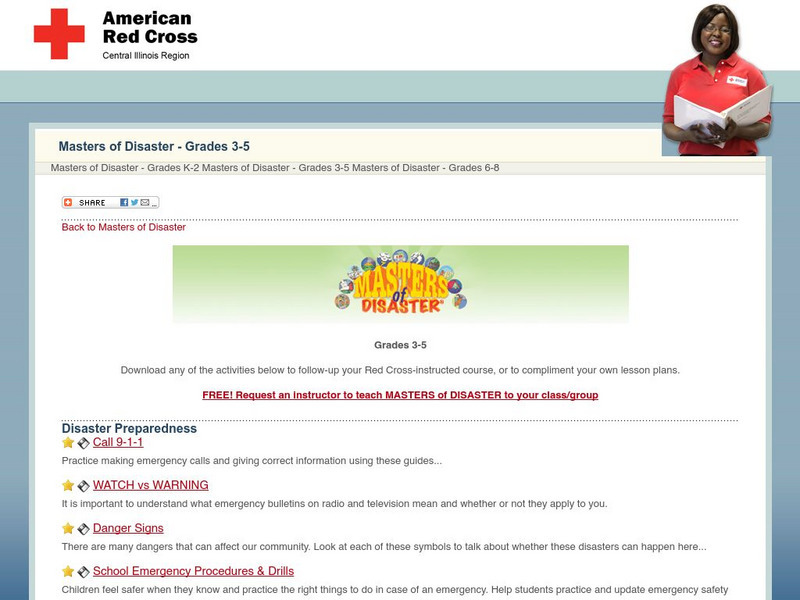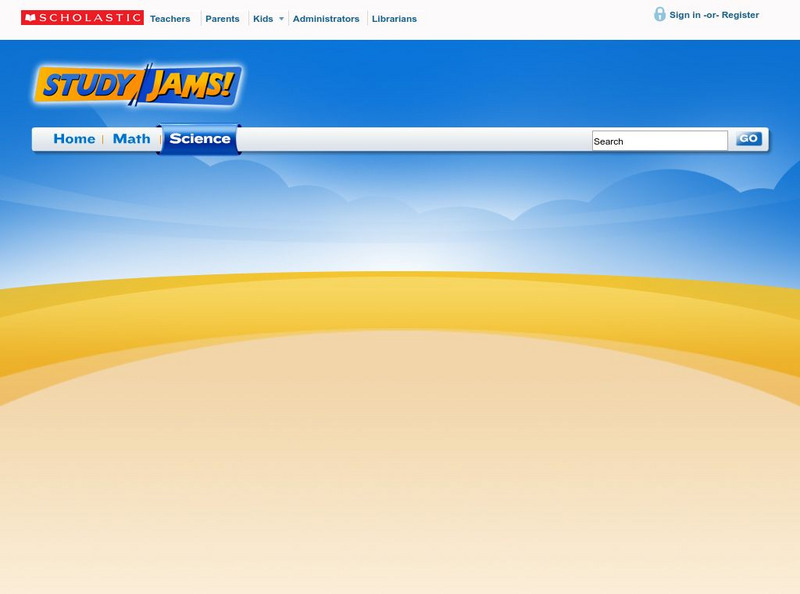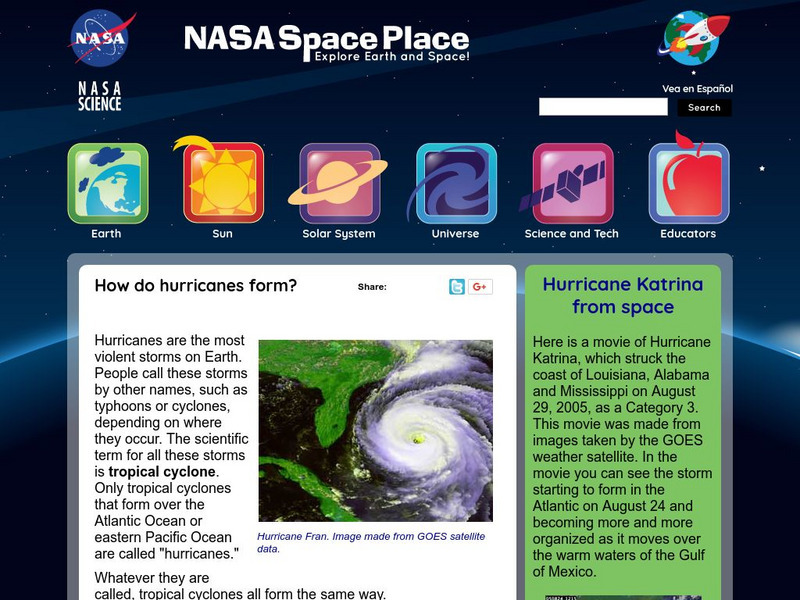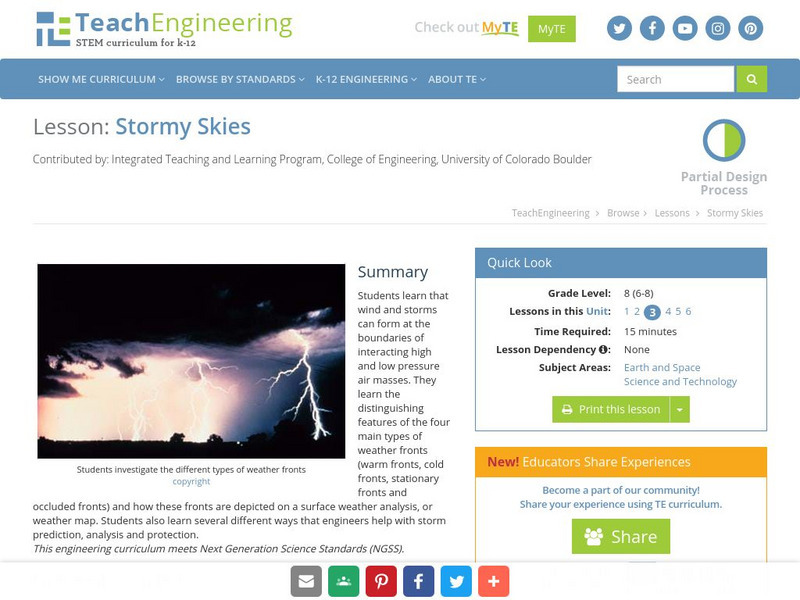TED Talks
Ted: Ted Ed: How Do Tornadoes Form?
Meteorologist James Spann sheds light on the lifespan of tornadoes as they go from supercell thunderstorms to terrible twisters before eventually dissolving back into thin air. [4:11]
Dan Satterfield
Dan's Wild Weather Page: Hurricanes
Use this site to find out about hurricanes and how to track them.
PBS
Pbs: Wgbh: Nova: Reconstructing a Storm
Scientists use a variety of tools to reconstruct storms in an effort to understand how they develop. These studies are conducted in an attempt to prepare for future storms. Peer close inside a megastorm, analyze and reconstruct it, and...
Other
Kidstorm: Hurricanes
Get the facts on hurricanes with this detailed information page. This page includes photos, charts and satellite images.
Other
American Red Cross: Masters of Disaster: Grades 3 5
This resource provides many science lessons with related activities for children in grades 3-5 regarding disaster preparedness. The resource covers tornadoes, fires, lightning, floods and general preparedness information.
NOAA
Noaa: Cpc: Hazards Assessment Brief
This Hazards Assessment from the Climate Prediction Center is intended to provide emergency managers, planners, forecasters and the public advance notice of potential hazards related to climate, weather and hydrological events. Check out...
NOAA
Noaa: Operational Significant Event Imagery
This site contains satellite images from around the world organized by significant events such as dust storms, floods, severe weather, etc. Not very user friendly, but the images are there for those willing to search.
Scholastic
Scholastic: Study Jams! Science: Weather & Climate: Severe Storms
A slideshow and a short multiple-choice quiz on the topic of severe storms, some types, and the damage that they cause.
National Geographic
National Geographic: Extreme Weather on Our Planet
This lesson from National Geographic for grades 2-5 has a great photo gallery and video of extreme weather, and a chart for plotting weather investigation. Learning objectives, teaching methods, and connections to National Science...
Science Education Resource Center at Carleton College
Serc: Drought
Eight online learning labs which focus on the effects of drought, the quiet disaster. Each module takes students to external sites containing data, graphs, and articles. Several labs also require additional software programs: a...
NASA
Nasa: Hurricanes
Learn about hurricanes and how they are created. Features include video animation, the histories of the most devastating hurricanes and topics such as hurricane naming and hurricane study.
NASA
Nasa: The Space Place: How Do Hurricanes Form?
This resource explores how hurricanes form and why they are called tropical cyclones. Images and illustrations are provided supporting this information.
CPALMS
Florida State University Cpalms: Florida Students: Natural Disasters
Enrich studying natural disasters like hurricanes and tornadoes. Know how to identify several types of natural disasters that occur in Florida, and describe how these disasters can affect people living there.
University of Wisconsin
The Why Files: Control a Tornado? Absolutely!
Control a tornado's intensity by manipulating its width and rotation speed.
TeachEngineering
Teach Engineering: Tornado!
Students learn about tornadoes - their basic characteristics, damage and occurrences. Students are introduced to the ways that engineers consider strong winds, specifically tornadoes, in their design of structures. Also, students learn...
TeachEngineering
Teach Engineering: Stormy Skies
Students learn that wind and storms can form at the boundaries of interacting high and low pressure air masses. They learn the distinguishing features of the four main types of weather fronts (warm fronts, cold fronts, stationary fronts...
CK-12 Foundation
Ck 12: Earth Science: Hurricanes
[Free Registration/Login may be required to access all resource tools.] Describes how a hurricane forms and its effects.
American Museum of Natural History
American Museum of Natural History: Tornadoes O Logy Card
Flip this interactive card to start learning about tornadoes, nature's most powerful storms. Answer multiple-choice and fact-or-fiction questions and review some fast facts about tornadoes.
NASA
Nasa: Sci Jinks: What's a Derecho?
Learn how the strong winds from a devastating storm called a derecho are different than the winds from a tornado. Discover how big a derecho can be and where they most likely occur.
NOAA
Noaa: Pmel: Tropical Atmosphere Ocean Project: Tao/triton Data Display
Resource features real-time data from moored ocean buoys for improved detection, understanding, and prediction of El Nino and La Nina with diagrams.
PBS
Pbs Nova: Killer Tornado of 1928
This resource provides a remarkable first-hand account of the day a tornado struck a small town in Nebraska in 1928 taking lives, injurying many, and causing much devastaion.
NOAA
Noaa: Nssl: Weather Colouring Books
Print these free colouring books about tornadoes, thunderstorms and winter weather.
Weather Wiz Kids
Weather Wiz Kids: Weather Safety
Click on the links to find guides to weather and natural disaster safety tips for earthquakes, floods, heat waves, hurricanes, lightning, mudslides, avalanches, thunderstorms, tornadoes, tsunamis, volcanoes, wildfires, and winter storms.
Other
Unisys: Hurricanes/tropical Data
There is a table that has links to hurricanes in the Atlantic from 1995, East Pacific from 1997, West Pacific from 1996, South Pacific from 2000, and South India from 2000. This page has a satellite map and the Saffir-Simpson Scale.























